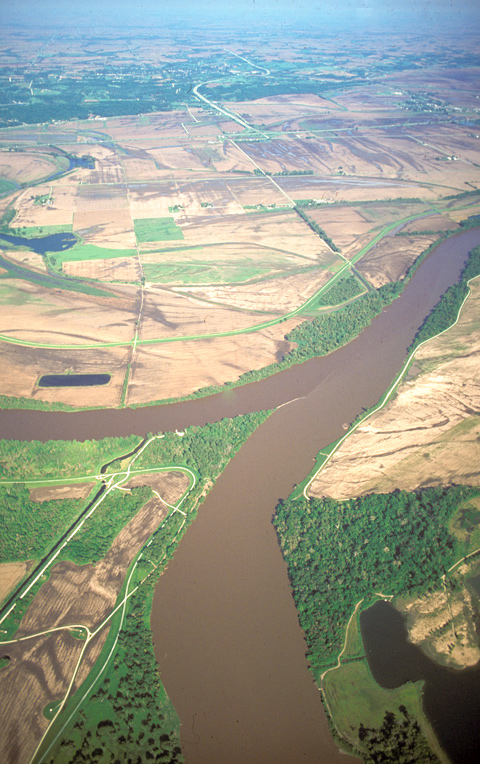Platte and Missouri River Confluence
View southeast, down the Platte into the Missouri
© 2000 Airphoto—Jim Wark.
The Corps of Discovery arrived at the mouth of the Platte at ten in the morning on 21 July 1804, noting first of all that “the Current of This river Comes with great Velocity roleing its Sands into the Missouri, filling up its Bend” and “we found great dificuelty in passing around the Sand at the mouth.” The problems they encountered have been wiped away by twentieth-century river engineering. It’s possible that the Missouri River at this confluence was four to eight times wider and much shallower in 1804 than it is today.
They stopped just long enough for the two captains to take a short side trip a mile or two up the Platte and record some simple hydrological observations—depths, widths, velocity of the current, character of its bed—then they pushed on up the Missouri. During the winter at Fort Mandan, Lewis wrote a 250-word summary of what he learned about the Platte River, drawing most of his information from the best secondhand source available, “one of our Party who wintered two winters on this river.”
The river named Platte—French for “flat”—drains nearly the entire state of Nebraska, whose name also means “flat,” in the Omaha and Oto languages. The comparatively safe and easy terrain is one reason that, beginning in the 1820s, the high road to the Southwest, California, and Oregon was not Lewis and Clark’s trail, but overland along the Great Platte River Road, which began in Omaha.
From Discovering Lewis & Clark from the Air
Photography by Jim Wark
Text by Joseph Mussulman
Reproduced by permission of Mountain Press

